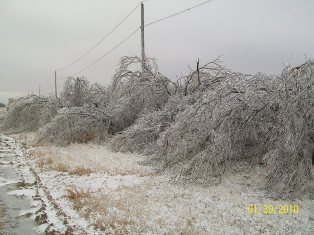
With much of the U.S. well in the grip of winter, NSSL continues its third year of leaning on the local community to help provide observations for research.
The Winter Precipitation Identification Near the Ground (W-PING) project invites public observations of winter precipitation from volunteers within a 90-mile radius of Norman, Okla.
Winter precipitation is particularly difficult to forecast because it may melt or re-freeze very near the ground. Because radars cannot see close to the ground, NSSL will use public observations of what is actually happening at the surface to compare with what the radar has detected. This information will help researchers improve computer programs and radar techniques to better estimate what is actually falling on the ground.
This is the first time W-PING observations will be compared with data from two radars during 2010 operations. The testbed NEXRAD radar and a new dual-polarized radar (OU-PRIME) will both be collecting data simultaneously.
This is a perfect opportunity for classrooms, families and closet scientists to be a part of important weather research happening in their backyard. Volunteers should visit: http://www.nssl.noaa.gov/projects/winter/ and click on “I Want to Volunteer!” There is no commitment, and no minimum number of reports. The form will request the date, time, location, and precipitation type.
Since the first year of W-PING, NSSL has received over 2,800 individual observations from volunteers. W-PING is coordinated by Kim Elmore, NSSL/CIMMS.

